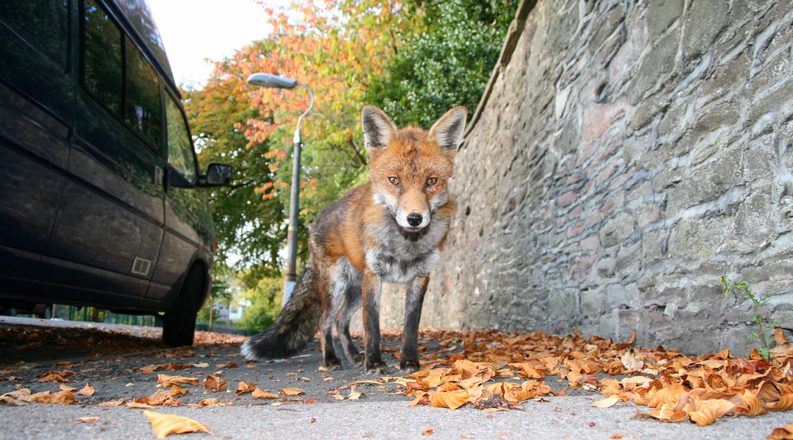The wily fox must be one of the best-known animals in the UK. I am willing to place a wager that there must be less than 100 people in the country who have never heard of a fox before. I conducted a quick straw poll among some of my friends asking who had never seen a fox, and the result was a resounding zero. Everybody had seen a fox.
They go through your bins, scrounge discarded chips, lounge on lawns and garden furniture, are sometimes found squished on the road, or follow you, bold as brass, as you head home feeling slightly squiffy after a night out. These were just some of the comments I received during my completely unscientific survey. Night-time is the right time for foxes. When they are checking out the nightlife from your garage roof there is no one around to tell them to get off.
Much has been written about the good old urban fox, ranging from nursery rhymes to the tabloid press, which regale us with tales of aggressive, oversized foxes terrorising neighbourhoods. The more well-informed among us will know that you are many times more likely to be bitten by next door’s Jack Russell than be troubled by a wayward fox, despite being common and often quite brazen. It is true to say that, as with many of the animals that share our city lives, foxes have been the victims of hype and exaggeration.
The red fox, as it is officially known, is a fascinating creature. It is the largest true fox in the world and, after us humans, is considered to be the most widely distributed land mammal on the planet. It is found throughout the northern hemisphere, including North America, plus it has been detrimentally introduced to Australia, where it has created havoc with the native species. In fact, the red fox is listed as one of the world’s 100 most invasive species.
In many parts of their range, foxes are not always red, sometimes appearing brownish or even grey. Normally, they are animals occupying a wide range of habitats. Though not necessarily rummaging through bins, they have become suburban creatures in many cities around the globe. But nowhere are they more in-your-face-urban than in the UK, and particularly Bristol.
When did foxes start moving to cities?
Our British foxes first developed a taste for city life as recently as the 1930s, when they initially invaded Bristol, with London following during the 1940s. It is estimated that these secretive animals are present in 90 per cent of the urban areas of England and Wales. Foxes have been a subject for study in Bristol for decades. It was here that researchers first noted how very successful they were at taking advantage of the opportunities that humans have put their way, as they are consummate omnivores.
City living certainly has its benefits – but there are downsides. Foxes are prolific breeders. In the autumn, fox families begin to split up, with the young vixens and dogs wandering off to set up new territories. Around 55 per cent of foxes die within their first year and 80 per cent don’t live to see their third birthday. Many fall victim to road collisions, starvation and predation from dogs.
It can be tough being a fox, and in the urban jungle it really is a case of survival of the fittest. So spare a thought the next time a fox crosses your path. I always do.
Discover more amazing wildlife from around the world
Top image: a red fox in Bristol. Credit: Getty

